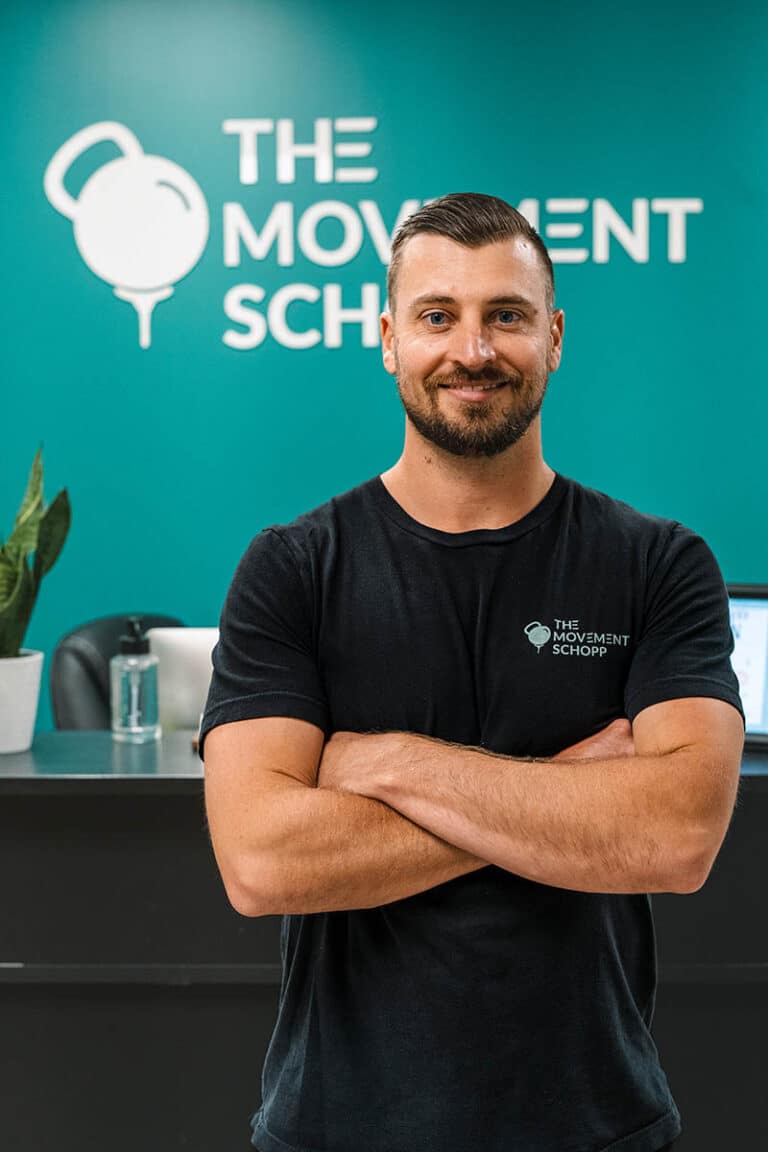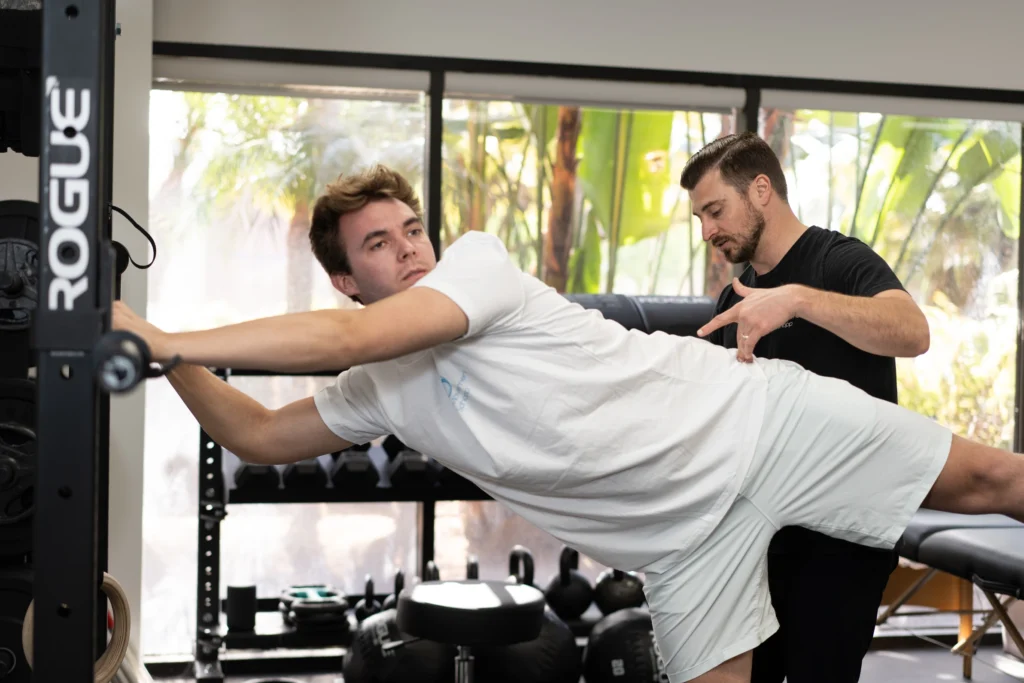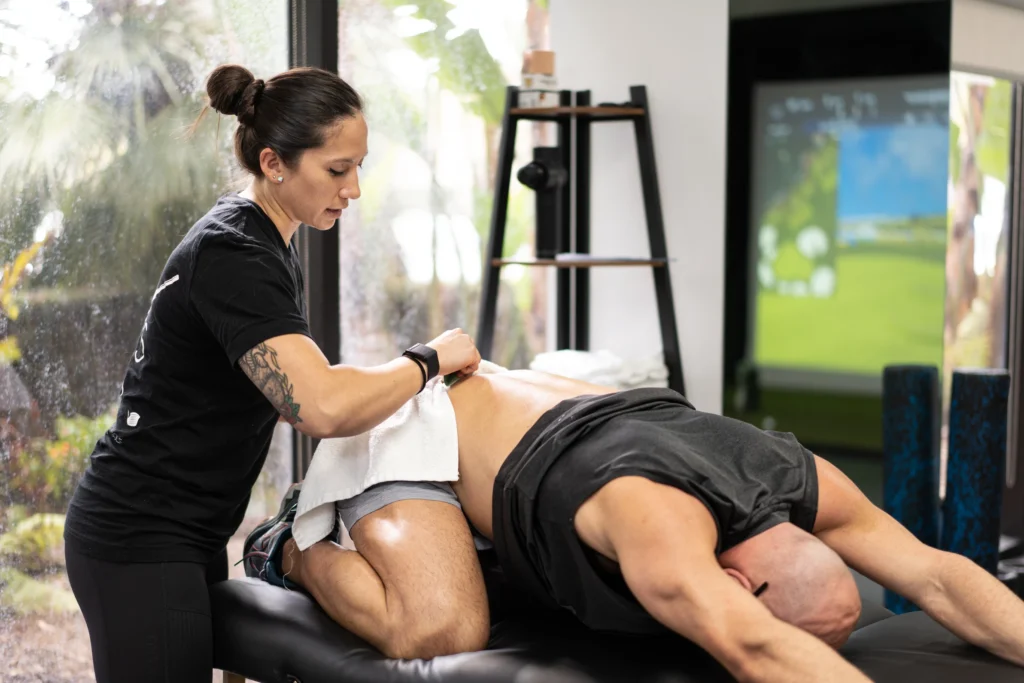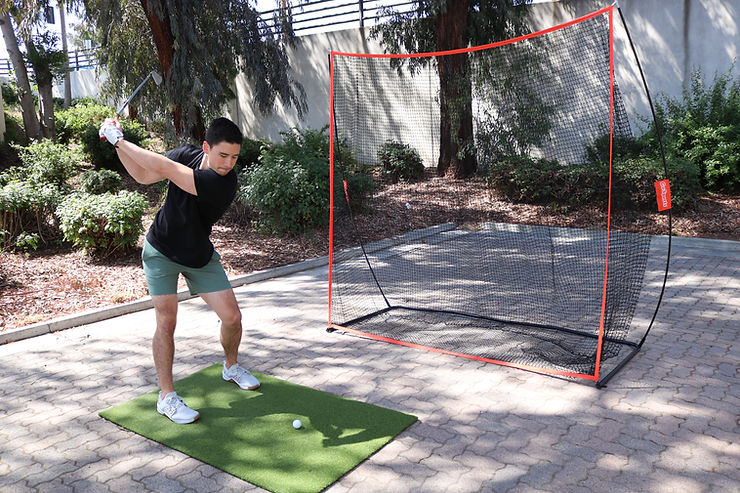Introduction
CrossFit has revolutionized the way we think about fitness, blending strength, endurance, flexibility, and functional movements into a cohesive and challenging workout regime. In this comprehensive guide, we’ll explore the best CrossFit movements for every type of workout, helping you to tailor your fitness routine to meet your goals, whether you’re looking to build muscle, enhance your stamina, or improve your mobility.
With a focus on all CrossFit movements, this post is designed to guide beginners and seasoned athletes in optimizing their workouts for maximum results.
What is CrossFit?
CrossFit is a high-intensity fitness program that incorporates elements from various sports and types of exercise. At its core, CrossFit aims to prepare the body for any and every imaginable physical challenge through a methodology that emphasizes varied, high-intensity functional movements. The beauty of CrossFit lies in its scalability, making it accessible to individuals at any level of fitness. From weightlifting to gymnastics and cardiovascular exercises, CrossFit covers all bases, ensuring a holistic approach to fitness.
What CrossFit Movements Exercises Right for You?
Selecting the right CrossFit movements for your workout is important in achieving your fitness objectives. Whether your goal is to increase strength, enhance endurance, improve flexibility, or all of the above, understanding which exercises align with your goals is the first step. CrossFit’s comprehensive approach to fitness incorporates a wide array of human movements, making it crucial to choose exercises that not only challenge you but also support your overall fitness journey.
Strength Building Movements
Strength is a fundamental component of CrossFit, laying the foundation for improved performance across all other areas, including the development of lean muscles. Here, we’ll delve into key weightlifting, powerlifting, and Olympic lifting movements that are staples in the CrossFit regimen.
Weightlifting
Squats (Back Squat, Front Squat, Overhead Squat)
Benefits: Squats are integral for building strength in the legs, hips, and core, enhancing overall amounts of power and stability. The back squat targets the posterior chain, the front squat emphasizes the quads and core, and the overhead squat develops stability and mobility in the upper body.
Technique Tips:
- Maintain a straight back and engaged core throughout the movement.
- Ensure your knees track over your toes, and avoid letting them cave inward.
- Depth is key. Aim for hips below the knees while keeping the chest up, especially in the front and overhead squats.
Deadlifts
Benefits: The deadlift is a foundational movement for developing strength in the back, glutes, and hamstrings. It’s crucial for building a strong posterior chain, which is essential for overall athletic performance.
Technique Tips:
- Keep the bar close to your body, lifting with your legs and hips rather than your back.
- Engage your core, and keep a neutral spine throughout the lift.
- Start with a weight that allows you to maintain proper form, gradually increasing to heavier weights as you become more comfortable.
Presses (Shoulder Press, Push Press, Jerk)
Benefits: These pressing movements are essential for building upper body strength, particularly in the shoulders, upper chest, and triceps. The shoulder press focuses on raw strength, the push press introduces an element of power through a dip and drive, and the push jerk further emphasizes explosiveness and stability.
Technique Tips:
- Ensure a solid base by engaging your core and glutes.
- In the push press and jerk, utilize your legs to generate momentum, driving the weighted barbell overhead.
- Keep the elbows under the bar in the starting position, and aim to lock out the arms quickly above the head.
Powerlifting
Bench Press
Benefits: The bench press is a staple exercise for building upper body strength, particularly targeting the chest, shoulders, and triceps. It’s fundamental for developing pushing power and overall upper body mass.
Technique Tips:
- Lie back on the bench with your feet planted firmly on the ground. Grip the bar slightly wider than shoulder-width.
- Lower the bar to the mid-chest level, keeping your elbows at a 45-degree angle from your body.
- Push the bar back up to the starting position, focusing on engaging your chest and triceps.
Sumo Deadlift
Benefits: This variation of the traditional deadlift shifts the emphasis to the hips, glutes, and inner thighs, providing a more comprehensive lower body workout. It’s particularly beneficial for those looking to improve their hip mobility and overall leg strength.
Technique Tips:
- Stand with your feet wider than shoulder-width apart, toes pointing outwards. Grip the bar inside your legs.
- Keep your chest up and back straight as you lift, driving through your heels.
- Engage your glutes and thighs to return to the starting position.
Olympic Lifting
Clean and Jerk
Benefits: The clean and jerk is a dynamic compound movement that improves explosive power, coordination, and full-body strength. It’s essential for developing quickness and power in CrossFit workouts.
Technique Tips:
- Begin with a solid deadlift to bring the bar to the hips, then explosively shrug and pull yourself under the bar, catching it in a front squat position.
- Stand up, then perform a power jerk by driving the bar in overhead position, ending with the arms straight and the barbell stabilized.
- Practice the clean and jerk in segments to master the technique.
Snatch
Benefits: The power snatch is another Olympic lift that requires and develops explosive strength, flexibility, and coordination. It works the entire body, emphasizing the shoulders, back, and legs.
Technique Tips:
- Start in a similar position to the clean but with a wide grip on the bar.
- Lift the bar close to the body, explosively extending the hips and legs to propel the bar upwards.
- Quickly drop under the bar, catching it in an overhead squat form before standing up.
Endurance and Stamina Movements
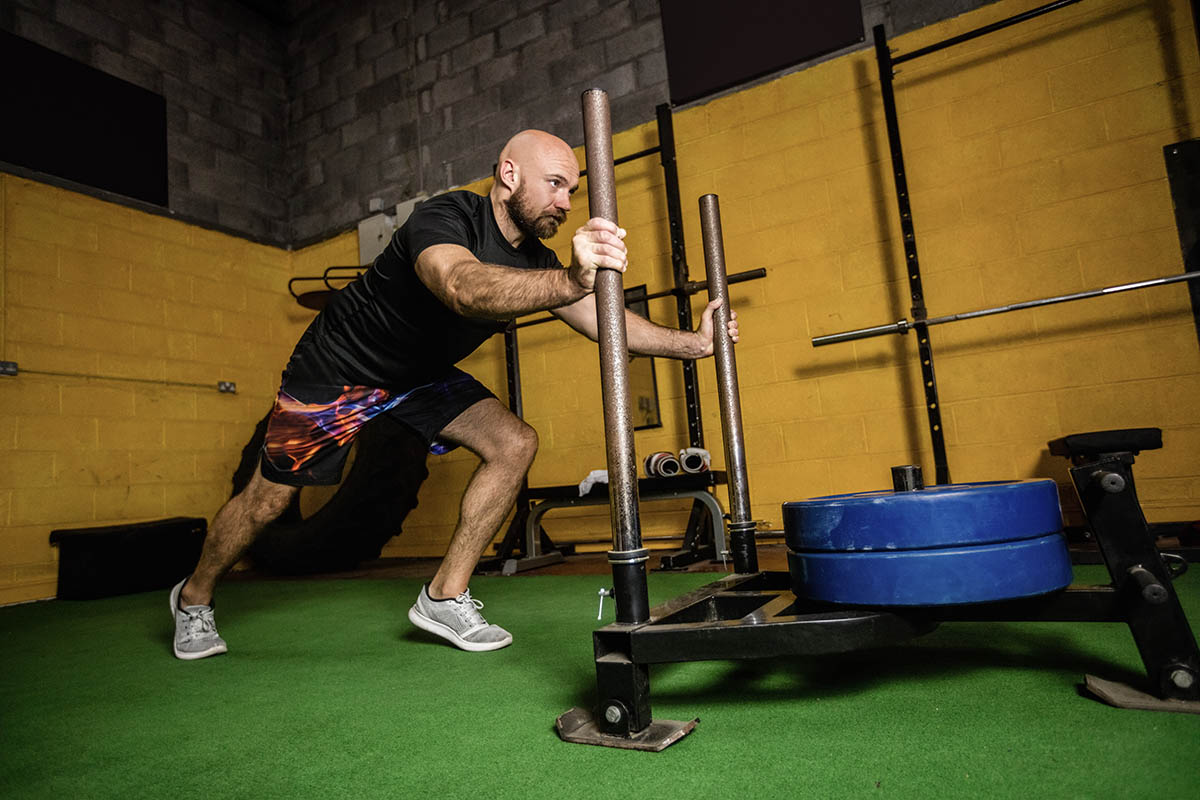
Building endurance and stamina offers a solid base for enhanced athletic performance across many activities. Let’s dive into how these movements contribute to building unparalleled endurance and stamina, complete with benefits and technique tips to maximize their effectiveness.
Cardiovascular
Running
Benefits: Sprints and long-distance running are both effective for building cardiovascular endurance. Sprints enhance speed and power, while long-distance running improves overall endurance and stamina.
Rowing
Benefits: Rowing is a low-impact, full-body workout that enhances cardiovascular fitness and endurance. It targets the legs, back, and arms, making it a comprehensive exercise for CrossFit athletes.
Technique Tips:
- Keep a strong posture, with a straight back and engaged core.
- Drive with the legs before using the back and arms to pull the handle towards your chest.
- Ensure a smooth, continuous motion for efficiency and to prevent injury.
Skipping (Jump Rope)
Benefits: Jump rope is a high-intensity cardiovascular exercise that improves coordination, agility, and stamina. It’s also effective for burning calories and can be a fun addition to any workout.
Technique Tips:
- Keep your elbows close to your sides, using your wrists to swing the rope.
- Stay light on your feet, jumping only high enough to clear the rope.
- Practice different rhythms and footwork patterns to keep the exercise challenging and engaging.
High-Intensity Interval Training (HIIT)
Box Jumps
Benefits: Box jumps develop power, speed, and explosiveness, which are crucial for many CrossFit movements list. They also improve coordination and agility.
Technique Tips:
- Stand at a comfortable distance from the box, with feet shoulder-width apart.
- Swing your arms and bend your knees to jump onto the box, landing softly in a squat position.
- Step back down and repeat, focusing on smooth, controlled movements.
Burpees
Benefits: Burpees are a full-body exercise that improves strength, cardio endurance, and coordination. They are highly effective for cardiovascular fitness and burning calories.
Technique Tips:
- Start in a standing position, then drop into a squat with your hands on the ground.
- Kick your feet back into a plank position, perform a push-up, then jump your feet back to your hands and leap into the air.
- Keep your movements fluid and maintain a brisk pace.
Flexibility and Mobility Movements
In CrossFit, flexibility and mobility are as important as strength and endurance. These components help in achieving better form, greater range of motion, and quicker recovery times. Below, we explore key gymnastics movements and stretching routines that are integral to enhancing flexibility and mobility.
Gymnastics
Muscle-Ups (Ring and Bar)
Benefits: Muscle-ups are a benchmark of upper body strength and mobility, combining a pull-up with a dip. They target the chest, arms, shoulders, and back while also requiring significant core engagement.
Technique Tips:
- Start with a strong grip and a false grip on rings to make the transition smoother.
- Focus on the “kip” motion to generate momentum from your hips, helping to propel your torso above the bar or rings to full arm extension.
- Practice strict pull-ups and dips separately to build the necessary strength.
Handstand Walks
Benefits: This exercise improves balance, core strength, and shoulder stability. Handstand walks also challenge your body’s proprioception and coordination.
Technique Tips:
- Begin by mastering a static handstand against a wall, focusing on keeping your body in a straight line.
- Gradually practice kicking off the wall to find your balance.
- Use your fingers and palms to control your movement and balance as you start to walk.
Pistol Squats
Benefits: Pistol squats are an advanced quality movement that challenges your balance, flexibility, and strength in the lower body, especially targeting one leg at a time.
Technique Tips:
- Start by holding onto a pole or door frame to assist with balance.
- Keep your chest up and extend the non-working leg in front of you as you squat down on the other leg.
- Work on ankle flexibility and strength to improve depth and stability.
Stretching and Mobility
Yoga Poses for CrossFitters
Benefits: Yoga can significantly enhance a CrossFitter’s mobility, flexibility, and recovery times. Specific poses can target areas that are often stiff or overworked, aiding in muscle relaxation and joint mobility.
Specific Poses and Their Benefits:
- Downward Dog: Improves shoulder mobility and stretches the calves and hamstrings.
- Pigeon Pose: Targets the hip flexors and glutes, areas often tight in CrossFitters.
- Warrior Poses: Enhance leg strength, flexibility, and stability.
Dynamic Stretches
Pre and Post-Workout Stretches: Incorporating dynamic stretches before workouts can prepare your body for the range of motion required in CrossFit movements. Post-workout, they aid in recovery and flexibility.
Examples of Dynamic Stretches:
- Leg Swings: Front-to-back and side-to-side leg swings warm up the hips and legs.
- Arm Circles: Gradually increasing in size, arm circles warm up the shoulders.
- Walking Lunges: Engage the hips, legs, and core while also stretching the hip flexors.
Flexibility and mobility are key to not only performing CrossFit movements correctly but also to ensuring a long, injury-free CrossFit journey. Incorporating these exercises into your routine will not only boost your performance but also enhance your overall fitness and well-being.
Functional Fitness Movements
Functional fitness is at the heart of CrossFit, emphasizing movements that mimic everyday actions, such as lifting, pulling, and reaching. These exercises improve balance, agility, and muscle strength, making everyday activities easier and reducing the risk of injury.
Core Strengthening
Planks (Various Types)
Benefits: Planks are a fundamental exercise for core strengthening, targeting not just the abdominal muscles but also the back, shoulders, and glutes. A strong core enhances stability and supports a wide range of movements in CrossFit and daily life.
Technique Tips:
- Keep your body in a straight line from head to heels, with elbows under shoulders.
- Engage your core, squeeze your glutes, and hold the position without letting your hips sag or pike.
- Experiment with variations such as side planks, forearm planks, and planks with leg raises to challenge different muscle groups.
Toes to Bar
Benefits: This movement not only strengthens the core but also improves grip strength and flexibility in the hamstrings. It’s particularly effective for enhancing the functional movement of lifting objects overhead.
Technique Tips:
- Begin with a strong overhand grip on the bar, arms shoulder-width apart.
- Use a kipping motion to swing your legs up, aiming to touch the bar with your toes.
- Keep the movement controlled and focus on using your abdominal muscles to lift your legs.
Mixed Modal
Wall Balls
Benefits: Wall balls are a high-intensity exercise that improves endurance, coordination, and strength. This exercise involves multiple muscle groups and joints, simulating the functional movement of picking up and lifting heavy objects.
Technique Tips:
- Start in a squat position, holding the medicine ball at chest level.
- Explode up from the squat, throwing the ball to a target on the wall.
- Catch the ball on its return, using the momentum to go back into the squat.
Kettlebell Swings
Benefits: Kettlebell swings develop power in the hips and legs while also strengthening the back, shoulders, and grip. This movement is essential for improving the functional ability to lift and move objects efficiently.
Technique Tips:
- Stand with feet shoulder-width apart, gripping the kettlebell with both hands.
- Hinge at the hips to swing the kettlebell back between your legs, then drive through your hips to swing it forward to chest height.
- Maintain a neutral position in the spine and engage your core throughout the movement.
Dumbbell Movements (Snatch, Thrusters)
Benefits: Dumbbell exercises like snatches and thrusters combine strength and power with cardiovascular endurance. They target multiple muscle groups and joints, enhancing functional fitness and movement efficiency.
Technique Tips:
- Snatch: Keep the dumbbell close to your body as you lift it overhead in one smooth motion, finishing with the dumbbell directly over your shoulders and hips.
- Thrusters: Combine a front squat with a press, using the momentum from the squat to help drive the dumbbells overhead.
Functional fitness movements are crucial for a well-rounded CrossFit routine, offering benefits that extend beyond the gym. They improve overall physical performance, make daily activities easier, and help prevent injuries.
Workout Programming and Strategy
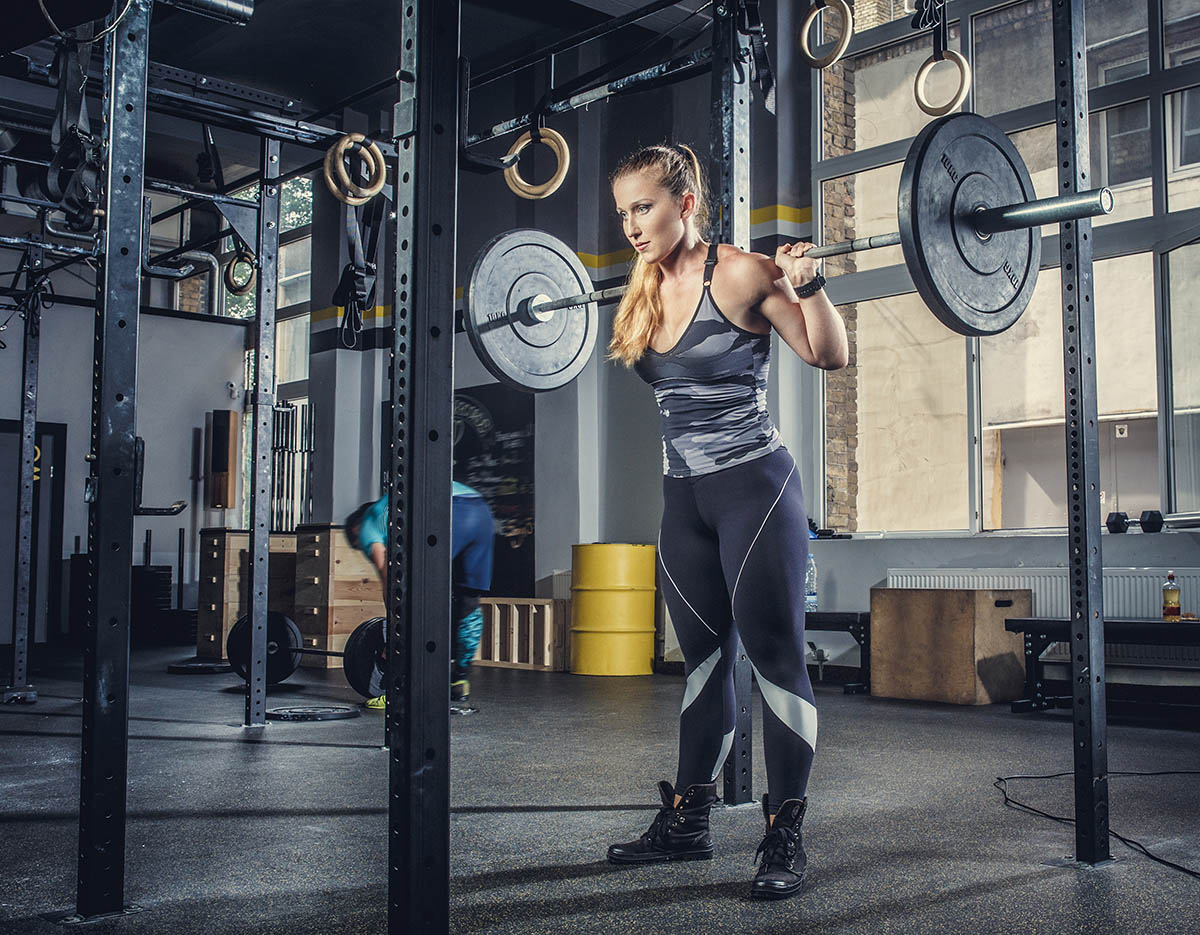
Crafting a well-thought-out workout program is crucial in CrossFit. It involves balancing different types of movements, managing intensity and volume, and ensuring adequate recovery. The goal is to continually challenge your body and mind, fostering growth and resilience.
Integration of Movements
Daily Variation
Incorporating a variety of movement option and workout styles prevents repetitive stress injuries, reduces boredom, and ensures comprehensive physical development. It embodies the CrossFit principle of being prepared for any physical challenge.
How to Implement:
- Mix strength, endurance, flexibility, and mobility workouts throughout the week.
- Ensure that major muscle groups and fundamental movement patterns are evenly covered.
- Use CrossFit’s Workout of the Day (WOD) as a guide for incorporating a wide range of exercises and techniques.
Skill Progression
Focusing on skill progression allows for continuous improvement and mastery over time, contributing to overall fitness and preventing plateaus.
How to Implement:
- Identify areas for improvement and set specific, measurable goals.
- Dedicate time each week to skill-specific training, such as Olympic lifting techniques or gymnastic movements.
- Celebrate milestones and progress, however small, to maintain motivation and focus.
Balanced Programming
Ensures all fitness components are developed in harmony, promoting overall health and performance while minimizing the risk of overuse injuries.
How to Implement:
- Balance high-intensity workouts with lower-intensity sessions to allow for recovery.
- Include both compound movements (like squats and deadlifts) and isolation exercises (like planks and arm curls) for comprehensive strength development.
- Regularly assess and adjust your program based on performance feedback and evolving fitness goals.
Variation and Progressive Overload
Varied Workouts
Keeps training exciting and challenging, ensuring the body doesn’t adapt to the same stimulus and continues to improve.
How to Implement:
- Introduce new exercises, modify existing ones, and play with workout formats (AMRAP, EMOM, Tabata, etc.).
- Incorporate themed workouts or challenges to keep motivation high.
Progressive Overload
Gradually increasing the intensity, volume, or complexity of workouts is fundamental for building strength and endurance.
How to Implement:
- Increase the weight, reps, or sets for strength exercises over time.
- For endurance or cardio workouts, gradually extend the duration or reduce rest periods.
- Introduce more technically demanding variations of movements as skills improve.
Recovery and Injury Prevention
Rest Days
Rest days are vital for physical recovery, psychological well-being, and long-term fitness progression. They allow the body to repair and strengthen.
How to Implement:
- Schedule at least one to two full rest days per week, depending on training intensity and personal recovery rates.
- Listen to your body and take additional rest days as needed, especially if you notice signs of overtraining.
Mobility and Flexibility
Enhances performance, reduces injury risk, and aids in recovery. It’s as critical as the workouts themselves.
How to Implement:
- Dedicate time before and after workouts for dynamic stretching and mobility exercises.
- Incorporate yoga or Pilates sessions into your routine to improve flexibility and core strength.
Nutrition and Hydration
Proper nutrition and hydration fuel performance, support recovery, and ensure overall health.
How to Implement:
- Focus on a balanced diet rich in proteins, carbohydrates, fats, vitamins, and minerals.
- Stay hydrated throughout the day, especially before, during, and after workouts.
Workout Programming and Strategy is about finding the right balance between pushing your limits and allowing your body to recover. By incorporating these strategies into your CrossFit routine, you can ensure a balanced, sustainable, and enjoyable fitness journey.
Boost Fitness with Top CrossFit Moves with The Movement Schopp
CrossFit’s diversity in movements and workouts ensures that enthusiasts overcome new challenges, constantly expanding the limits of their physical and mental strength. For those looking to elevate their CrossFit experience, The Movement Schopp offers various resources, including personalized coaching, community-driven support, and specialized CrossFit physical therapy. This ensures you find the right CrossFit near me opportunities. Leveraging expert advice, state-of-the-art facilities, and a supportive community can significantly impact your CrossFit journey, helping you to master movements faster, push through tough workouts, and achieve your fitness goals.
Conclusion
CrossFit is a dynamic and comprehensive fitness program that caters to individuals seeking a challenging yet rewarding approach to exercise. Through a blend of strength building, endurance and stamina enhancement, flexibility and mobility work, functional fitness movements, and strategic workout programming, CrossFit movements offer something for everyone.
Whether you’re new to CrossFit or looking for skill development, integrating a variety of exercises into your routine and focusing on balanced programming are key to achieving and maintaining peak physical condition. Remember, success in CrossFit comes not just from the workouts you do but also from the recovery, nutrition, and community support you embrace along the way.
FAQs
What is the most difficult movement in CrossFit?
The answer varies among individuals, as it often depends on one’s strengths, weaknesses, and fitness background. However, movements like the muscle-up, snatch, and handstand walk are frequently cited as challenging due to their requirements for strength, coordination, and technique. Overcoming these challenges is part of what makes CrossFit uniquely rewarding.
Why is CrossFit so effective?
CrossFit’s effectiveness lies in its varied, high-intensity, functional movements that imitate everyday activities, ensuring comprehensive physical development. This approach helps improve not just strength and endurance but also agility, balance, and flexibility, contributing to overall health and fitness. Additionally, the supportive community and competitive atmosphere foster motivation and commitment.
Is it safe to do CrossFit every day?
While CrossFit can be done daily, it’s essential to listen to your body and incorporate rest or active recovery days to prevent overtraining and injuries. Balancing high-intensity workouts with adequate rest and recovery strategies, such as mobility work and nutrition, is crucial for long-term progress and health.

